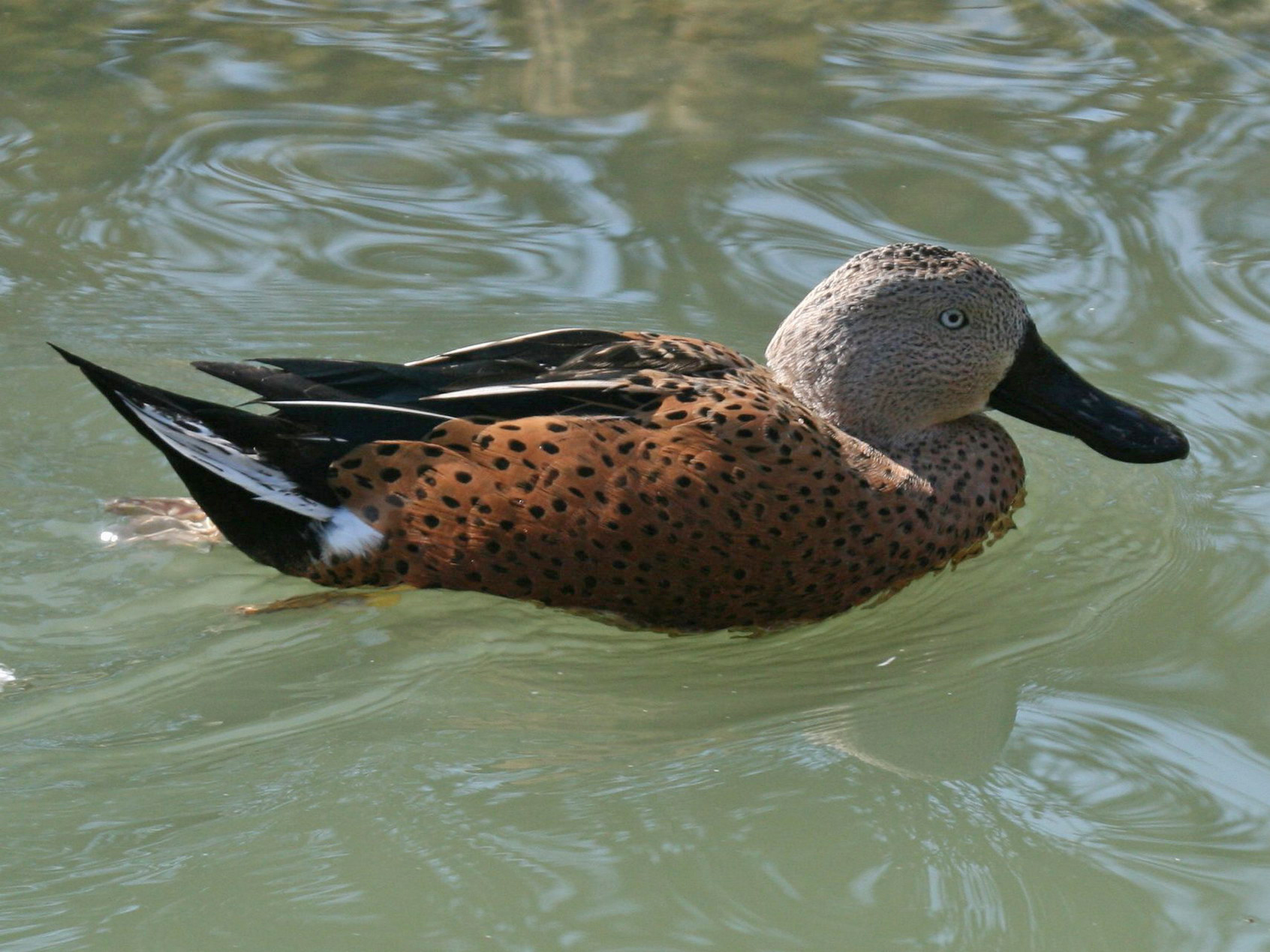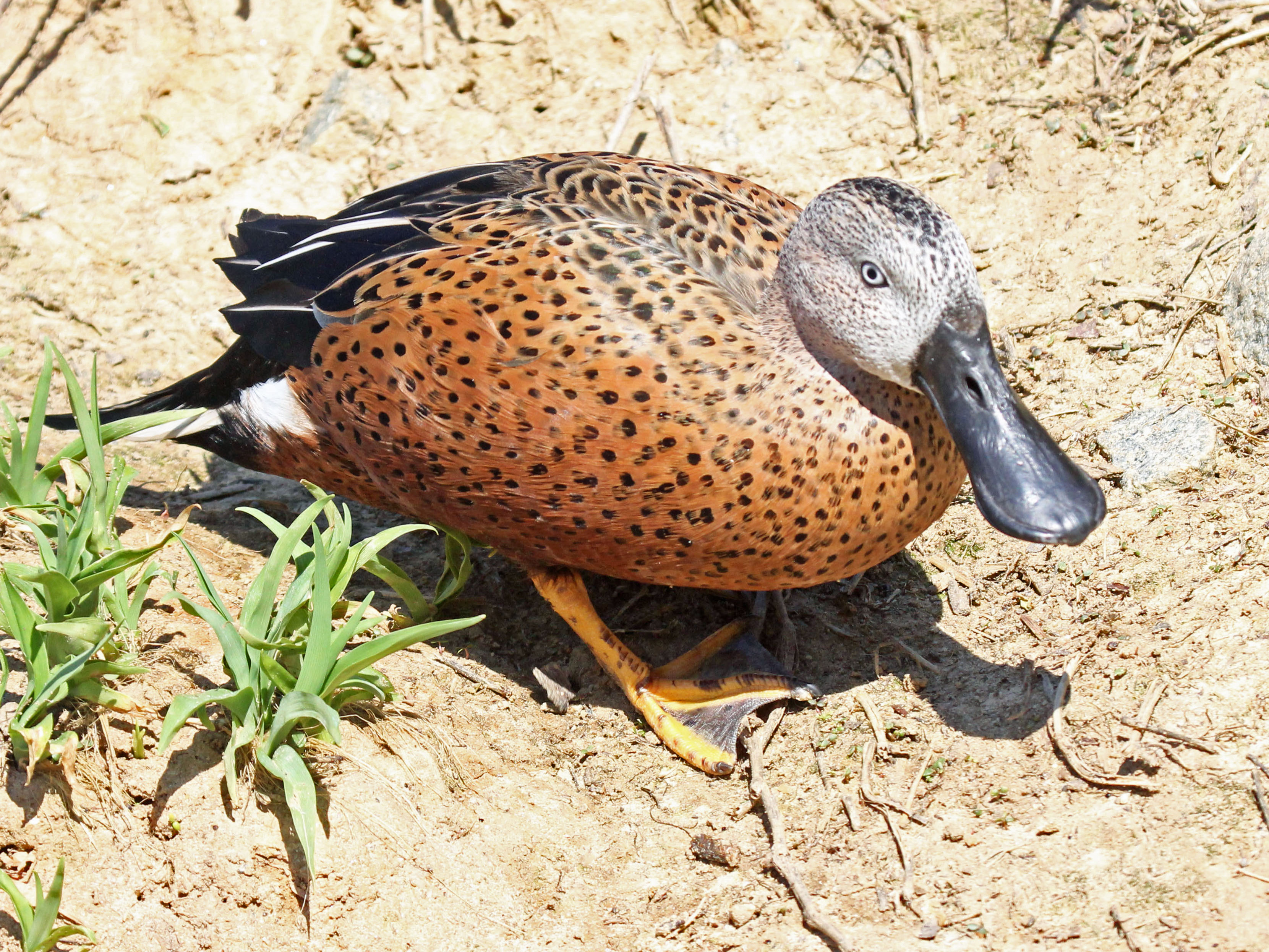The red shoveler, scientific name Spatula platalea is a species of dabbling duck native to southern South America.
Red shoveler Overview
The Red Shoveler also referred to as the Red Shoveller, is a dabbling duck of the Anas genus present in South America.
The Shoveler’s bill has a comb-like construction on its edges which acts as a sieve to filter out meals from the water’s floor.
The Red Shoveler is common and isn’t threatened, it’s at present classed as Least Concern.
The red shoveler is a species of dabbling duck. It is present in southern South America, Argentina, southern Peru, southern Bolivia, Uruguay, Paraguay, the Falkland Islands, South Georgia, and the South Sandwich Islands, southern Brazil, and Chile. In winter the southernmost birds migrate north to Brazil and Peru.

The red shoveler is cinnamon in color with darkish spots and a green speculum. The head and neck are grayish. They have a big darkish spatula formed bill.
Distribution and habitat
The red shoveler breeds within the southern half of South America. It ranges from Tierra del Fuego northwards to Chile and most elements of Argentina, in addition to to the Falkland Islands, and there are small remoted breeding populations in southern Peru.
Red shoveler inhabits shallow lakes and pools with dense reed beds and marshes and may also be present in brackish waters, akin to coastal lagoons and estuaries. Wetlands, Marshes, Pools, Lakes, Lagoons, and Estuaries are their common habitats.
Red shoveler Description
The Red shoveler species has a spatula-shaped bill, a green speculum, and light blue higher wing converts. Male shovelers fluctuate in color from red to paler shades of red (and pink), whereas the females are likely to have massive, darkish bills.
Adults attain a size of about 45–56 centimeters (18–22 in), weigh about 523–608 grams (1.153–1.340 lb), and have a wingspan of about 66–73 centimeters (26–29 in).
This species has a particularly massive range and therefore doesn’t strategy the thresholds for Vulnerable under the range size criterion (Extent of Occurrence <20,000 km2 mixed with a declining or fluctuating range size, habitat extent/quality, or population size and a small variety of places or extreme fragmentation).
The population pattern seems to be stable, and therefore the species doesn’t strategy the thresholds for Vulnerable under the population pattern criterion (>30% decline over ten years or three generations).
The population size could also be reasonably small to massive, however, it’s not believed to strategy the thresholds for Vulnerable under the population size criterion (<10,000 mature people with a continuing decline estimated to be >10% in ten years or three generations, or with a specified population construction). For these reasons, the species is evaluated as Least Concern (IUCN, 2012).
Size
450mm to 560mm (16″ to 33″)
Red shoveler Appearance
The male has Cinnamon plumage with darkish spots, the head and neck are Grey with Black spots on the crown, the eyes are a pale Bluish White, and the big spatula formed bill is Black.
The wing has Blue coverts, a green speculum, and a white underside. The lower back and rump are Black and the tail is Black with White outer feathers. The legs and feet are Yellow/Orange.
The feminine has Brown Grey dappled plumage, massive spatula formed bill, and Brown eyes. The legs and feet are Grey.
Red shoveler Diet
Red shovelers have a diet that features herbs, grasses, pondweeds, widgeon grass, algae, and eelgrass. Aquatic Plants, Insects, Seeds, Plankton, Invertebrates, and Molluscs.
They additionally feed on small invertebrates. The bill is provided with a lamellate filtering mechanism that enables the extraction of small objects of meals from the water.
Reproduction
Pairs type within the wintering grounds, after usually noisy courtship. Once a clutch of 7-8 creamy white-colored eggs is laid, incubation lasts about 25–26 days, adopted by 40–45 days of fledging.
The breeding time is from September to October. The nest is constructed on the ground from twigs, reeds, and dry grass.
Migration
Red shovelers are partially migratory, with the southernmost birds migrating north throughout the winter season.
Red shoveler Conservation
The red shoveler is a comparatively common and widespread species and isn’t at present thought of in danger. However, it could undergo to an extent the degradation of its wetland habitats.
The Red shoveler species is assessed as Least Concern on the IUCN Red List attributable to its extraordinarily massive range and apparently general stable population.
More Interesting Articles
- Poicephalus Parrot Profile, Care, Diet Facts and Species
- Wandering Albatross – Habitat | Size | Diet | Facts | Wingspan
- African Cape parrot Personality and Price for Sale
- Great Albatross Facts with Large Wingspan
- Meyer’s Parrot for Adoption and for Sale Near Me
- Waved albatross Profile | Traits | Breeding | Habitat | Facts
- White-faced Black Spanish Chicken Breed | Bantam | Hen | For Sale
- Harz Roller Canary – Singing Price For Sale
- Andalusian Chicken – Profile | Traits | Eggs | Breeds | Facts
- Minorca Chicken Breed | Recognized Variety | Buff | Black | For Sale
- Ancona Chicken Size For Sale | Breed | Eggs | Characteristics
- Catalana Chicken Breed – What to Know for Sale
- Hamburg Chicken Breed – Golden | Blue | Eggs | For Sale
- Rosy Faced lovebird – Agapornis roseicollis Lifespan
- Yellow collared Lovebird (Agapornis personatus) Facts
- Barred, Lineolated or Catherine Parakeet (Bolborhynchus lineola)
- Pacific Parrotlet (Forpus coelestis) – Lesson’s or Celestial Parrotlet
- Turquoise parrot – Neophema pulchella Parrotlet
- Java Sparrow – Java Finch Facts | Pet | Lifespan
- Eastern Rosella Parrot – Platycercus eximius Pet Bird
- Plum Headed Parakeet – Psittacula cyanocephala Facts
- Lilian’s Lovebird (Agapornis lilianae) – Facts | Price | Food | Care
- Alexandrine Parakeet – Alexandrine Parrot Size | Facts | Diet
- Sun Conure or Sun Parakeets – Life Span | Food | Price




